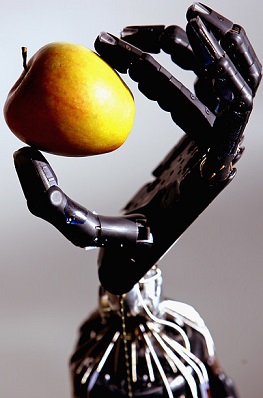Grasping touch for replacement limbs
 If humans are ever to wield robotic limbs, we will need to know what they are feeling. New research has taken the first steps toward that ability.
If humans are ever to wield robotic limbs, we will need to know what they are feeling. New research has taken the first steps toward that ability.
A team at the University of Chicago has laid the groundwork for touch-sensitive prosthetic limbs that can convey real-time sensory information via a direct interface with the brain.
“To restore sensory motor function of an arm, you not only have to replace the motor signals that the brain sends to the arm to move it around, but you also have to replace the sensory signals that the arm sends back to the brain,” said the study's senior author, Sliman Bensmaia, PhD, an assistant professor at the University of Chicago.
“We think the key is to invoke what we know about how the brain of the intact organism processes sensory information, and then try to reproduce these patterns of neural activity through stimulation of the brain.”
The team has identified some such patterns in the minds of monkeys – which work in a very similar way to our own.
The initial phase of experiments has focused on contact location, or sensing where the skin has been touched.
Animal test subjects were trained to identify several patterns of physical contact with their fingers. Researchers then connected electrodes to areas of the brain corresponding to each finger and replaced physical touches with electrical stimuli delivered to the appropriate areas of the brain.
The animals responded the same way to artificial stimulation as they did to physical contact.
A second round of experiments performed a similar test, but with the sense of pressure simulated by an electrical current. Again, the animals' response was the same whether the stimuli were felt through their fingers or through artificial means.
The same signals sent to the monkeys’ brains could be transmitted by a prosthetic limb, creating a feedback cycle of sense and neural response. In theory it would allow a user to feel like an organic limb would - making an artificial appendage just as useful.
“The algorithms to decipher motor signals have come quite a long way, where you can now control arms with seven degrees of freedom. It's very sophisticated. But I think there's a strong argument to be made that they will not be clinically viable until the sensory feedback is incorporated,” Bensmaia said.
“When it is, the functionality of these limbs will increase substantially.”
An advance copy of the full report has been published online.








 Print
Print